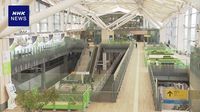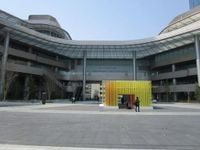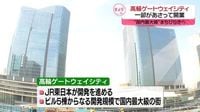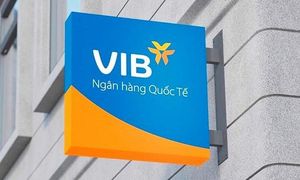On March 27, 2025, the eagerly anticipated Takanawa Gateway City will officially open its doors, marking a significant milestone in urban development in Tokyo’s Minato Ward. This ambitious project, spearheaded by JR East Japan, is set to become one of the largest new urban areas in the country.
Takanawa Gateway City comprises five impressive buildings, including twin towers known as 'The Link Pillar.' These structures will host a blend of commercial, residential, and office spaces, designed to cater to the needs of the community and the surrounding areas. The project aims to redefine urban living by integrating modern technology, sustainable design, and community-centric spaces.
As part of the grand opening, parts of the complex, specifically two of the five buildings, will open for business. This includes a range of eateries and office spaces, providing essential services to local residents and visitors. Innovative services will be available, such as drink delivery robots and autonomous vehicles that will travel through the complex, enhancing convenience for those who frequent the area.
“When you swipe your Suica card at the gate, you’ll receive coupons and discounts applicable within this new city,” a spokesperson for JR East Japan explained during a recent tour aimed at the media and stakeholders.
The Takanawa Gateway Station will also see the addition of a second ticket gate to accommodate the expected influx of visitors and commuters. This enhancement is part of a broader strategy to connect the urban community with efficient transportation options, especially considering the station's proximity to the bustling Haneda Airport.
The Takanawa Gateway City area, which was developed on a previously underutilized vehicle maintenance facility, has seen an investment of approximately 600 billion yen, reflecting the commitment of JR East to revitalizing this part of Tokyo. The total floor area of the new development is around 845,000 square meters, which will eventually include new high-end rental apartments, as well as facilities for international conferences and hotels.
“This is a new hub for innovation, education, and commerce,” said Tomoyuki Degawa, manager at JR East’s Urban Development Division. “We aim to promote interaction between businesses, facilitate joint research initiatives, and encourage new technology development.”
In an effort to enhance the nightlife and local economy, Takanawa Gateway City will feature various entertainment options, including music bars and experiences designed to enrich the urban culture. Additionally, the complex will integrate a new campus for the University of Tokyo, fostering an environment of collaboration and knowledge-sharing among students, residents, and businesses.
While parts of Takanawa Gateway City open on March 27, a full launch, including the complete Lumine commercial facility dubbed Newoman Takanawa, is scheduled for later in 2026. This facility will house around 200 shops covering a total area of 64,000 square meters, establishing a comprehensive shopping destination that caters to a diverse clientele.
Two stores within Newoman, the popular Blue Bottle Coffee and the upscale flower retailer Nicolai Bergmann, will open concurrently with the city’s launch, reflecting the area's aim to provide high quality services and establishments that cater to a wide range of experiences.
Enhanced facilities, including a quick-service café and a specialty cream puff shop located in the station, will contribute to the growing appeal of Takanawa Gateway City. Event spaces within the station will also serve as a venue for various events, aiming to enhance the public's experience and interaction with the urban environment.
In conclusion, Takanawa Gateway City is not just a new development but a vision for a futuristic urban community designed to thrive alongside its residents and visitors. As Tokyo continues to evolve, this project aims to become a cornerstone of lifestyle enhancement and technological advancement in the heart of the city.








